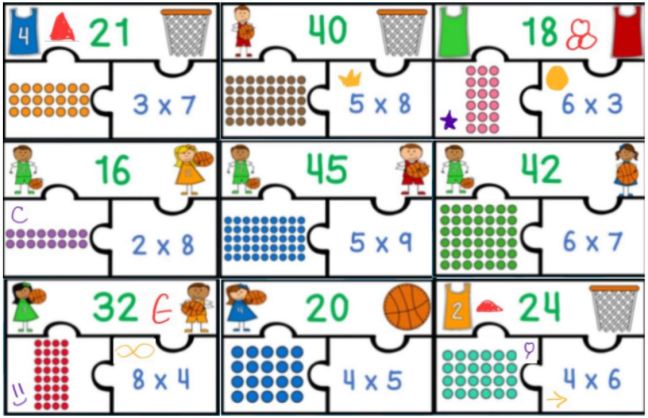 As I mentioned yesterday, my new book includes links to online resources to help you play with word problems. So this week, I’m sharing a few of my favorites.
As I mentioned yesterday, my new book includes links to online resources to help you play with word problems. So this week, I’m sharing a few of my favorites.
Visit the Kickstarter
Today we examine a time-tested method to help kids reason about math: Leave out the numbers.
First up, there’s Brian Bushart’s numberless problem bank for young students. Then we’ll look at Farrar Williams’s modern revision of a math teaching classic with problems for upper-elementary and middle school students.
Have fun thinking math with your kids!
Word Problem Bank
 Word problems are commonplace in mathematics classrooms, and yet they regularly confound students and lead to frustrated teachers saying things like:
Word problems are commonplace in mathematics classrooms, and yet they regularly confound students and lead to frustrated teachers saying things like:
- “They just add all the numbers! It doesn’t matter what the problem says.”
- “They don’t stop to think! They just start computing as soon as they’re done reading the problem.”
Brian Bushart offers a collection of ready-to-go slide presentations that walk through the steps of making a word problem make sense.
Visit the Site
Math With No Numbers
 Discover Farrar Williams’s book Numberless Math Problems: A Modern Update of S.Y. Gillian’s Classic Problems Without Figures, available in ebook or paperback.
Discover Farrar Williams’s book Numberless Math Problems: A Modern Update of S.Y. Gillian’s Classic Problems Without Figures, available in ebook or paperback.
Williams writes: “In order to answer the question, they’ll have to explain it, because the problem doesn’t give you anything to calculate with. The only way to answer is by explaining your process. See how sneaky a numberless problem is? It makes students really think about the process of solving the problem.”
Find Out More
“When students face a word problem, they often revert to pulling all the numbers out and “doing something” to them. They want to add, subtract, multiply, or divide them, without really considering which operation is the right one to perform or why.
“When you don’t have numbers, it sidesteps that problem.
“For students who freeze up when they see the numbers, this can be a really good way to get them to think about their process with math.”
—Farrar Williams, Math With No Numbers
CREDITS: Feature photo (top) by saeed karimi via Unsplash.com.



 Word problems are commonplace in mathematics classrooms, and yet they regularly confound students and lead to frustrated teachers saying things like:
Word problems are commonplace in mathematics classrooms, and yet they regularly confound students and lead to frustrated teachers saying things like: Discover Farrar Williams’s book Numberless Math Problems: A Modern Update of S.Y. Gillian’s Classic Problems Without Figures, available in ebook or paperback.
Discover Farrar Williams’s book Numberless Math Problems: A Modern Update of S.Y. Gillian’s Classic Problems Without Figures, available in ebook or paperback.




 The best way to practice math is to play with it—to use the patterns and connections between math concepts in your pursuit of something fun or beautiful.
The best way to practice math is to play with it—to use the patterns and connections between math concepts in your pursuit of something fun or beautiful.

